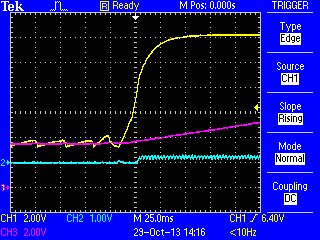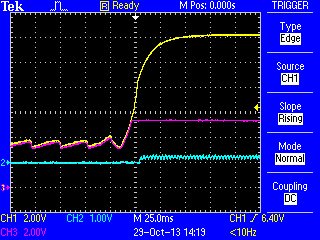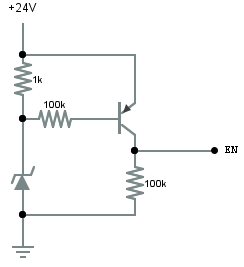Greetings,
I am having a brown-out recovery problem with the TPS54525 on the evaluation board (originally brought to my attention from prototype units, but duplicated the problem on the TPS54525 evaluation board).
The evaluation board has been altered to increase the output voltage to 5V (R1 -->124k, R2 -->22.1k). VIN=12VDC (bench supply), Vout=5V, load is a 250R power resistor.
When VIN is ramped down to ~3.5V, then ramped back to 12VDC, the output stays low (pulsing, ~230mVRMS). Has anyone else had this issue, or have any insights on this?
Scope captures: CH1 VIN, CH2 Vout, CH3 varies [EDIT: these captures are from the prototype board, not eh Eval board]
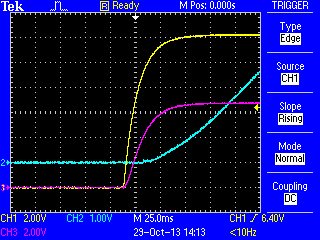 Cold start (from everything off), CH3 Enable
Cold start (from everything off), CH3 Enable
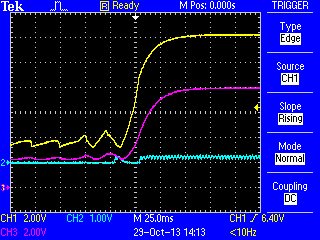 Return from brownout, CH3 Enable
Return from brownout, CH3 Enable


